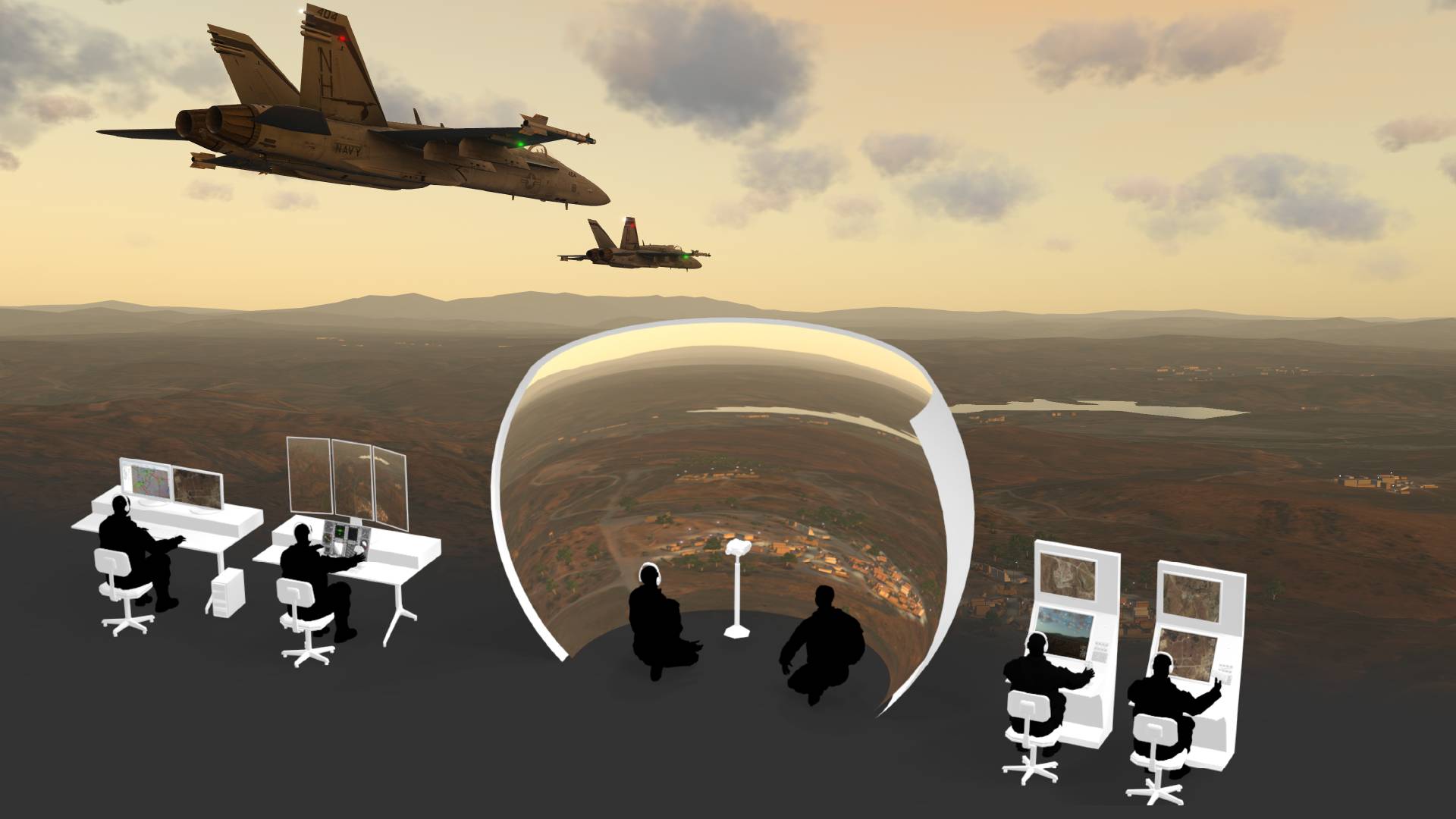Scenario-based training (SBT) can help the defence sector solve vital military aviation training challenges.
Air forces around the world have pilot training goals. But some forces are missing these targets.
In 2023, Sky News reported trainee RAF pilots having to wait up to a year to begin flying lessons. The US Air Force also has had problems meeting its annual pilot training target.
SBT speeds up the learning process. It trains aviators in critical competencies and decision-making in simulated environments. This is a cost-effective, accessible training solution, offering military personnel vigorous training programmes to support, enhance, and accelerate their learning.
What is scenario-based learning?
In scenario-based learning, the participant progresses through interactive scenarios designed to prompt problem-solving and critical thinking. The learner must make real-time decisions and choices.
This learning method is active and immersive, placing the learner in lifelike situations where they control their actions.
You can create scenario-based learning environments using physical role-play and group training, but military scenario-based learning increasingly uses virtual reality (VR) and simulation technology.
Scenario-based training includes several scenarios:
- Simulation scenarios present a simulated environment in which users practice their skills and undertake tasks.
- Decision-making scenarios present learners with situations in which they must solve problems or choose actions
- Interactive scenarios allow the user to be part of the action, interacting with their environment
- Narrative scenarios create stories in which the user plays a central role in determining and reacting to the action
Typically, SBT combines several of these scenarios at once.
Why is scenario-based training important?
Learning is about accumulating knowledge, understanding a subject and acquiring skills. This should change the behaviour of the learner. But frequently, the behaviours and skills necessary for learners to perform demanding tasks and roles are multi-dimensional and demanding.
The American psychologist David A Kolb divided the learning cycle into four main components:
- Concrete experience
- Observation and reflection
- Forming abstract concepts
- Experimenting and testing actively
Difficulties arise when you apply these different components to training.
Because individuals must learn several things at once, a linear approach proves ineffective – it's not a case of simply hopping from one component to the next.
Scenario-based training solves this problem by incorporating all four of Kolb’s learning components and applying them simultaneously. It broadens training capabilities and opportunities significantly and promotes in-depth learning.
SBT is much closer to how people learn in the real world. This experiential learning is well-suited to the military, where individuals must train to operate in high-risk, unpredictable scenarios and make complex decisions.
In military aviation training, simulation technology is the delivery mechanism for highly focused SBT.
How do combat pilots use virtual reality (VR) and simulation technology in scenario-based training?
When training, combat pilots must prepare for multiple dangers and challenges and ensure they have a complete skill set to perform fundamental air manoeuvres.
They must train in critical decision-making, know how to react to emergencies, engage in air-to-air combat and fly in hostile air space. They need to communicate and collaborate effectively and efficiently.
The training process is long and arduous to be thorough in ensuring trainees are fit for the demands of the role in all its aspects.
Now, VR and simulation technology are revolutionising how combat pilots train.
Military aviators learn to act and react in immersive, virtual reality scenarios. These scenarios test their decision-making, responsiveness and ability to operate under pressure.
Simulator programmes for fighter jets and attack helicopters combine cockpit control simulators and head-tracking systems with high-definition projections and sophisticated graphics. These programmes cover combat flight skills and bespoke mission and combat exercise training.
Is scenario-based training effective?
For military training programmes, SBT addresses four major factors impacting training quality:
- Situational awareness
- Effectiveness
- Efficiency
- Standardisation
Situational awareness is vital in any programme to monitor the trainee's strengths and weaknesses and avoid common training errors. It also ensures trainees receive the right resources.
VR and simulation technology incorporate highly accurate metrics and monitoring to provide detailed feedback and visibility to trainers to ensure different programmes and exercises meet their objectives.
Obviously, the effectiveness of SBT is central to its success.
Again, feedback tools support this. Plus, the customisable nature of these programmes makes them highly adaptable and flexible to meet specific military training needs.
Efficiency arises naturally from the adaptability and flexibility of SBT programmes.
They bridge the gap between the classroom and real-world training while being cost-effective on resources, equipment and time.
Trainers must ensure they can meet individual needs and offer a standardised level of quality to everyone undergoing training.
The inbuilt monitoring and analytics of VR and simulation-based SBT programmes fully support this.
For the learner, SBT is highly effective for these main reasons:
- Increased engagement
- Increased knowledge retention
- Improved application of knowledge
- Accelerated competency
The process of scenario-based learning is iterative – the learner can try, fail, learn and try again. This type of learning would be otherwise impossible for combat pilots without risking their lives.
Training military simulation solutions from ST Engineering Antycip and sister company MAK Technologies.
ST Engineering Antycip specialises in immersive training programmes and software for the defence and military sector.
Alongside military aviation projects such as Tiger attack helicopter simulators and enhanced Eurofighter training, these cover bespoke military simulations, 3D and terrain modelling, computer-generated forces and cyber-defence training.
Please contact us for more details about our military training solutions.




















